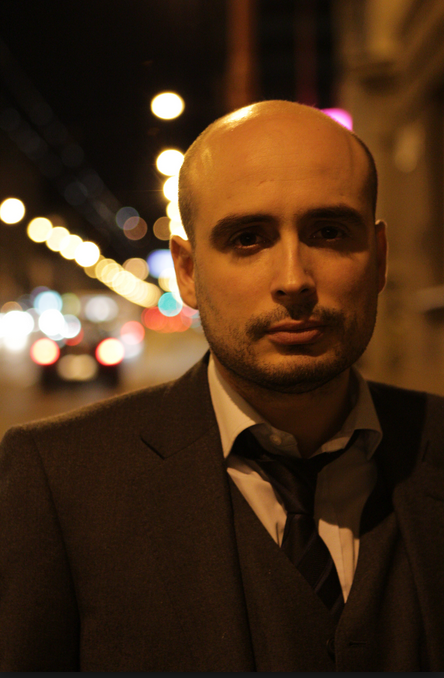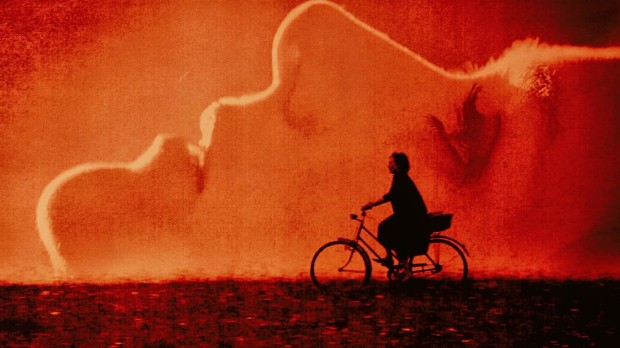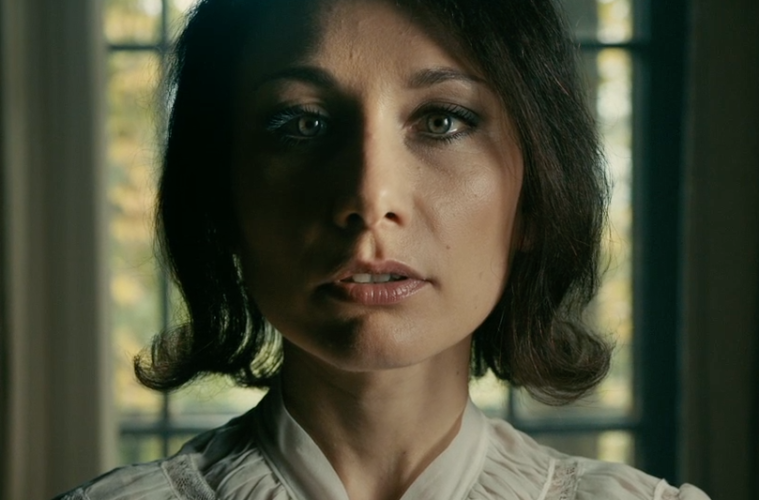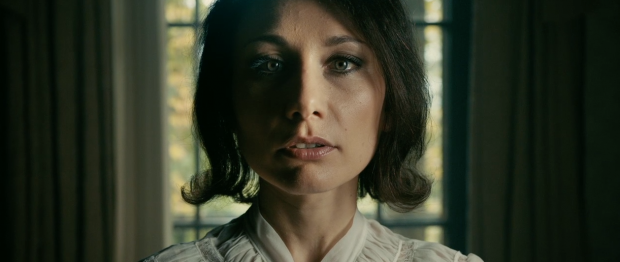Perhaps it’s premature to call The Duke of Burgundy the best film of 2015 — it is, after all, only January — but tell that to anyone who has seen the film, and they’ll likely nod in agreement. Director Peter Strickland’s visually sumptuous, aesthetically sublime study of role-playing and sadomasochism (but funny!) is a true stunner, and has mesmerized audiences at festivals in Toronto and London.
For Strickland, it is another utterly unique success. His first two features, 2009’s Katalin Varga and 2012’s Berberian Sound Studio, showed him to be a winking master of elevated genre fare. Burgundy, however, is something else entirely. Infused with the spirit of ’70s sexploitation and influenced by everyone from Fassbinder to Brakhage, it is an experience like no other in recent memory. It also features two perfect performances from co-leads Sidse Babett Knudsen (Cynthia) and Chiara D’Anna (Evelyn) as lovers immersed in a relationship of role-playing and elaborate (controlled) deception.
Strickland spoke with us about audience reaction, his lack of interest in psychoanalyzing his characters, and why The Duke of Burgundy is a “party-pooper film.” Check out the full conversation below.
If a viewer reads a plot summary of this film, they might walk into it expecting something very different, perhaps far more serious. Yet there is so much humor here. How did you walk that fine line between highlighting the inherent humor of the situation and not going overboard?
I think humor just comes naturally in what I write, although perhaps not as much in my first film [Katalin Varga]. How do you tackle sadomasochism? If you’re too serious, you can fall flat on your face, and then it really does become a comedy — in a bad sense. If you’re too joke-y, then it’s too disrespectful and just doesn’t work. For me, it’s knowing when to laugh. It’s not my right to laugh at the characters — I wanted to give them some dignity. But I want to laugh at the situations. I’m not making a realistic film, but I am making one that’s pragmatic, which involves an element of things going wrong: The dominant woman misses her queue; there’s a mosquito in the room; the fear of being this dominant, cold ice queen, but also making sure you’re not hurting your lover. You can’t inquire how they are, or the fantasy is broken. So that whole trick is a conundrum. There’s a paradox, in that Evelyn wants to control how much she is controlled by Cynthia, but both of them are caught up in these paradoxes.
 Something Sidse Babett Knudsen and Chiara D’Anna capture so well is the monotony and occasional boredom of the dominant/submissive relationship. This is such a smart and very human approach to the material. Was capturing that element of the relationship one of your goals?
Something Sidse Babett Knudsen and Chiara D’Anna capture so well is the monotony and occasional boredom of the dominant/submissive relationship. This is such a smart and very human approach to the material. Was capturing that element of the relationship one of your goals?
I think it is an element of puncturing that ideal that comes out in some films that explore sadomasochism. A lot of them want to prop up or live out the fantasy. This one wants to puncture the balloon — this is a party-pooper film. [For example, we] see a dominant woman miss her queue, and sleep in her pajamas. She doesn’t sleep in corsets or something; she’s going to sleep in baggy pajamas like anyone else would. It’s peeling away those masks, and showing the layers beneath. There are so many things you can cinematically explore the power dynamics in any relationship. But you can also explore the parallels between the character directing the action and the director directing the actors — Evelyn’s script, her mark tape on the floor, Evelyn looking through the keyhole, Evelyn directing Cynthia when she’s masturbating. [Then there is] Cynthia’s fear of performing, a fear that anyone would have. I’d hate to be an actor!
When the film starts, the audience finds it hard to tell who is actually in control — who is the dominant and who is the submissive. Were you trying to keep these details mysterious when we first meet Cynthia and Evelyn?
Absolutely. I was hoping that audience members who are not familiar with exploitation films would believe Cynthia is just this horrible boss. Another element of the audience, that is familiar with this type of genre film would think, “Okay, this is the classic set up for [1977’s] Ilsa, the Wicked Warden.” That kind of film is playing with this ideal of the masochist. Here, the paradigm hasn’t shifted, but your knowledge has shifted. It shifts later on because Cynthia gets a lot of mileage out of doing these things to Evelyn, but then it runs out, and she’s no longer into it. That’s the crux of the film, really. Had they both been into these games it would be quite boring. I wanted it to be that one of them doesn’t get off on it. The activity she has to do is not of any relevance; it could be any sexual activity she finds distasteful, or repellent. But what happens then, when you have two lovers who have very different ways of expressing themselves sexually and emotionally? How does that work? Can that work? I’m not one to answer that, but I am showing them struggling to find that common ground.
You avoid presenting any type of back story for these characters — no flashbacks to their pasts, or psychoanalyzing. Did you develop any kind of histories for these characters?
I really did not want to do that. I didn’t have any discussions with the actors, although I think Chiara wrote a whole essay on her character. But that was self-motivated. I didn’t want to make any links to childhood — [issues like] self-harming, I did not want to go there. Who knows why Rambo is heterosexual? That’s the way they are and that’s that. What’s interesting for me is the dynamic of how to navigate this relationship. This is who these people are. Right! Let’s get on to it. What happens? How do they resolve these things? If it is something outside of the border of consent, of course one looks into the childhood to find out why. Here, no matter how unusual it might be to some people, [the acts are] consensual. These are sane human beings, and they have a lot of trust.
So for me, I didn’t feel the need to look into their childhoods. Had one of them been an axe-wielding murderer, [we might] have a little peak into her past. I think sometimes you don’t know the “why.” With some killers, you find out about their childhood and it was absolutely fine. So it’s a roll of the dice. That’s a really scary, abstract thing to deal with. Not enough has been done on that, really. This is why I think We Need to Talk About Kevin could have been a better film. It was a good film, but had they shown the mother being full of love for the son, and then him going off the rails, it would have been far more shocking. If you give a reason for something it can be too simple. Real life isn’t like that. It’s far more abstract.
The chemistry between Sidse Babett Knudsen and Chiara D’Anna is so strong; we feel as if these two characters have known each other for years. How did you develop that chemistry and believability?
With great difficulty. We didn’t have much time together. They landed in Hungary, and off we went. We had a social meeting the first time they met, but they were really thrown straight in. I didn’t want to have the intimate scenes at first; I saved those for the second week. I felt we should do the heavy, emotional, dramatic scenes first, where they’re arguing and bickering. That worked out quite well, because they were kind of finding their bearings. By the time we got to the second week they were quite relaxed. That is down to Sidse and Chiara, and their expertise as actors. I left a lot to them. Occasionally, rarely, if it was off-key, then I would mention it and say, “We need to go a different way.” But usually I just respected the fact that they read the script, we had a discussion, and off they go. My influence is on casting, and making sure I can have actors who have the ability to just get on with it. There’s no point talking for the sake of it. With Sidse, she has a whole inner world in her face — so expressive without it being too much. Really understated.

The time and setting here is very mysterious. Did you have a particular time or place in mind, or want to create something that was ambiguous? How does the all-female cast tie in here?
I wanted it to be ambiguous, like a fairy tale, or a fable. You’re not sure how the hell they got their money to have this ludicrously expensive mansion. Are they outside a village? Does a village not exist? I wanted a preposterous feel, so preposterous that hopefully you would stop questioning it. I think part of it was I also wanted to avoid the trappings of the subject. One thinks of a film that has sadomasochism and it usually involves leather whips, rubber, and so on, and I just thought that was too predictable. Why don’t we just go for something more gothic-fairy tale, and not use anything contemporary? Make it timeless in a tasteful way. I just love fairy tales, basically, and that’s the bottom line. I love that feeling of seeing things like Willy Wonka or Pinocchio and you don’t know where it is exactly. It’s somewhere middle Europe, roughly within a 50-year span.
What was interesting about having all females is that it stopped being a gay film. I have no issue with [that type of film] whatsoever; it’s purely that I didn’t want to go down the road of anything that’s been done before with the ideas of acceptance or redemption. I wanted there to be no counterpoint. Gender and sexuality doesn’t come into it in that sense. In my mind, it is this kind of Utopian world we all wish could be there in terms of acceptance. I thought about other options — a woman and a man, men only — but [I thought of the films] of Radley Metzger, which usually had female lovers. I was using the genre as a starting point.
The music by Cat’s Eyes, featuring Faris Badwan from the Horrors and multi-instrumentalist Rachel Zeffira, could not be more perfect.
I’m a massive fan. I bought their first album when it came out in 2011, and it was one of the best things I’d heard in years. The combination of Rachel’s classical background and Faris’s experimental rock’n’roll background [seemed to fit], so I asked if they would do it. I trusted them immensely. [At one point], Rachel wrote a requiem quickly. We had Mozart’s Requiem in there originally, and she said, “Oh, I’ll write something,” and wrote a whole requiem. They really elevated the film for me. I listen to the soundtrack a lot, which is quite rare. Usually, when you do a soundtrack of a film, no matter how much you like it, you’ve heard it to death. But I still listen to it.
Lastly, the film drew major raves after premiering at TIFF. Can you discuss the audience response? Has it surprised you at all?
No matter what you make or who you are, deep down, you have no idea how it’s going to turn out, so there’s extreme apprehension. Some people call [the subject matter] unusual, but for me, I think it’s a very straightforward drama. But even knowing it’s a drama, and fairly straight, I still felt apprehension. So I was relieved when people responded to it.
The Duke of Burgundy arrives in theaters and VOD on January 23rd. See the opening credits above.


